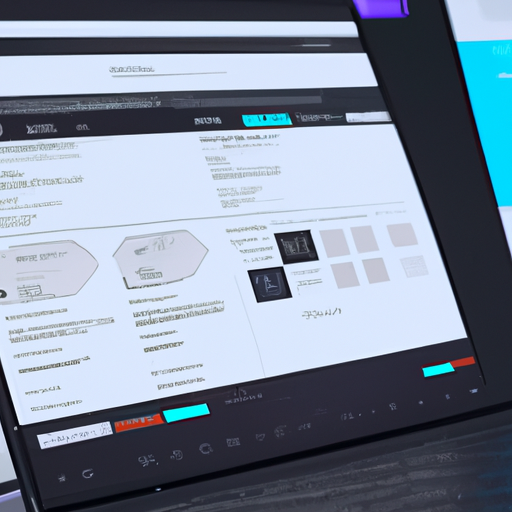-
Table of Contents
- Introduction
- Cryptographic Cover: Shielding Data Transactions
- Identity Insulation: Self-Sovereign Safeguards
- Zero-Knowledge Zones: Privacy-Preserving Protocols
- Permissioned Perimeters: Controlled Access Chronicles
- Audit Trails: Transparent Yet Private Transactions
- Regulatory Readiness: Legal Landscape and Compliance
- Q&A
- Conclusion
“Privacy Pinnacle: Elevating Security Standards in the Web3 World.”
Introduction
Privacy Pinnacle: Security Significance in Web3 is a comprehensive guide that explores the critical role of security in the emerging Web3 landscape. It delves into the importance of privacy in the decentralized web, highlighting the various threats, challenges, and potential solutions. The guide underscores the need for robust security protocols and practices in Web3 to protect user data and ensure the integrity of decentralized networks. It also provides insights into the evolving security standards and technologies in the Web3 ecosystem, emphasizing their significance in fostering a secure and privacy-centric digital environment.
Cryptographic Cover: Shielding Data Transactions
In the digital age, privacy has become a paramount concern. As we transition from Web 2.0 to Web3, the significance of security in this new internet era cannot be overstated. Web3, or the decentralized web, promises a future where users have full control over their data. However, this control is only possible with robust security measures in place. One such measure is cryptography, a method of protecting information by transforming it into an unreadable format. Cryptography is the backbone of Web3’s security, providing a shield for data transactions and ensuring the Privacy Pinnacle.
Cryptography, in essence, is the practice of securing communication in the presence of adversaries. It involves the use of codes and ciphers to encrypt data, making it unreadable to anyone except those with the correct decryption key. In the context of Web3, cryptography is used to secure transactions on the blockchain, the underlying technology of this new internet era. Blockchain transactions are encrypted using complex mathematical algorithms, ensuring that only the intended recipient can access the information.
The use of cryptography in Web3 extends beyond just securing transactions. It also plays a crucial role in user authentication and identity verification. In the traditional web, or Web 2.0, users rely on centralized entities like Google or Facebook to verify their identities. These entities have access to a wealth of personal information, raising concerns about privacy and data misuse. In contrast, Web3 uses cryptographic keys for identity verification. Users have a pair of keys – a public key that they share with others, and a private key that they keep secret. This system allows users to prove their identity without revealing any personal information, achieving a higher level of privacy.
Moreover, cryptography is instrumental in maintaining the integrity of data in Web3. It ensures that once data is recorded on the blockchain, it cannot be altered or tampered with. This is achieved through the use of cryptographic hash functions, which generate a unique output for each unique input. Any change to the input, no matter how small, results in a completely different output. This makes it virtually impossible to alter data on the blockchain without detection, providing a strong deterrent against fraud and corruption.
However, while cryptography provides a robust shield for data transactions in Web3, it is not without its challenges. The complexity of cryptographic algorithms requires significant computational power, which can lead to scalability issues. Additionally, as quantum computing advances, there are concerns that traditional cryptographic methods may become vulnerable to quantum attacks. Therefore, ongoing research and development are crucial to ensure that cryptography can continue to provide a secure foundation for Web3.
In conclusion, as we move towards a more decentralized web, the importance of security and privacy becomes increasingly apparent. Cryptography serves as a critical tool in achieving this Privacy Pinnacle, providing a secure cover for data transactions in Web3. It not only secures transactions but also enables user authentication and maintains data integrity. Despite the challenges it faces, with continuous research and development, cryptography promises to uphold the Security Significance in the era of Web3.
Identity Insulation: Self-Sovereign Safeguards
In the digital age, privacy has become a paramount concern. As we transition from Web 2.0 to Web3, the significance of security cannot be overstated. Web3, or the decentralized web, promises a future where users have complete control over their data, a concept known as self-sovereign identity. This shift towards Identity Insulation and self-sovereign safeguards is a critical aspect of the Web3 paradigm, and understanding its implications is essential.
Web3 is a radical departure from the current internet model, Web 2.0, where a few centralized entities control the majority of data and online services. In contrast, Web3 is a decentralized network that leverages blockchain technology to distribute control and ownership across its users. This decentralization is the cornerstone of Web3’s promise of privacy and security.
The concept of self-sovereign identity is central to this new model. In the Web 2.0 world, our identities are fragmented across various platforms, each with its own set of data and privacy policies. This fragmentation not only makes managing our online identities cumbersome but also exposes us to privacy risks. Self-sovereign identity, on the other hand, gives users complete control over their digital identities. They can decide what information to share, with whom, and for how long.
This shift towards self-sovereign identity is not just about privacy; it’s also about security. In the current model, our data is stored in centralized servers, making it a prime target for hackers. With self-sovereign identity, our data is stored on a decentralized network, making it much harder for malicious actors to access. Moreover, because users have control over their data, they can revoke access at any time, adding an extra layer of security.
However, the transition to self-sovereign identity is not without challenges. For one, it requires a significant shift in mindset. Users must take responsibility for managing their digital identities, which can be a daunting task. Additionally, there are technical challenges to overcome. For instance, ensuring that data stored on a decentralized network is both secure and accessible is no easy feat.
Despite these challenges, the potential benefits of self-sovereign identity are immense. It promises a future where users have control over their data, where privacy is a right, not a privilege, and where security is built into the very fabric of the internet. This is the promise of Web3, and it’s why the transition to self-sovereign identity is so significant.
In conclusion, as we move towards Web3, the importance of privacy and security becomes increasingly apparent. The concept of self-sovereign identity, with its promise of Identity Insulation and self-sovereign safeguards, is a critical aspect of this new internet paradigm. While the transition may be challenging, the potential benefits are immense. As we stand on the cusp of this new era, it’s clear that the future of the internet lies in decentralization, privacy, and security.
Zero-Knowledge Zones: Privacy-Preserving Protocols

In the rapidly evolving digital landscape, privacy and security have become paramount. As we transition from Web 2.0 to Web3, the next generation of the internet, these concerns are more significant than ever. Web3, also known as the decentralized web, promises to give users more control over their data. However, this control is only possible with robust privacy-preserving protocols. Among these, zero-knowledge proofs (ZKPs) stand out as a pinnacle of privacy, offering a revolutionary approach to data security.
Zero-knowledge proofs are cryptographic methods that allow one party to prove to another that they know a specific piece of information without revealing any details about the information itself. This concept, though seemingly paradoxical, is a powerful tool in the quest for privacy and security in Web3. It allows for the verification of transactions and interactions without the need for trust or the disclosure of sensitive information.
The significance of zero-knowledge proofs in Web3 cannot be overstated. In a world where data breaches and privacy violations are commonplace, ZKPs offer a beacon of hope. They provide a way to ensure data privacy while still maintaining the functionality and utility of the decentralized web. This is particularly important in the realm of decentralized finance (DeFi), where financial transactions need to be both secure and private.
In DeFi applications, zero-knowledge proofs can be used to verify transactions without revealing the details of the transaction itself. This means that users can prove that they have enough funds to make a transaction, for example, without revealing the exact amount of their holdings. This level of privacy is unprecedented in traditional financial systems and is only possible through the use of advanced cryptographic techniques like ZKPs.
Moreover, zero-knowledge proofs are not just limited to financial transactions. They can be used in a variety of applications in Web3, from identity verification to voting systems. In each of these cases, ZKPs provide a way to verify information without compromising privacy. This is a significant shift from the current state of the internet, where users often have to give up their privacy in order to use certain services.
However, the implementation of zero-knowledge proofs is not without its challenges. They are complex and require a deep understanding of cryptography to implement correctly. Additionally, they can be computationally intensive, which can lead to scalability issues in larger systems. Despite these challenges, the potential benefits of ZKPs make them a promising solution for privacy and security in Web3.
In conclusion, as we move towards a more decentralized internet, the importance of privacy-preserving protocols like zero-knowledge proofs becomes increasingly clear. They offer a way to navigate the tension between privacy and functionality, allowing users to maintain control over their data while still participating in the digital economy. While there are challenges to their implementation, the potential of ZKPs to revolutionize privacy and security in Web3 makes them a critical area of focus in the ongoing development of the decentralized web. As such, zero-knowledge proofs truly represent the Privacy Pinnacle in the realm of Web3 security.
Permissioned Perimeters: Controlled Access Chronicles
In the digital age, privacy has become a paramount concern. As we transition from Web 2.0 to Web3, the significance of security in this new internet era cannot be overstated. Web3, or the decentralized web, promises a future where users have full control over their data, a stark contrast to the current centralized systems where large corporations hold the reins. This shift towards a more user-centric model is a welcome change, but it also brings with it new challenges in terms of security. One of the key aspects of this new paradigm is the concept of Permissioned Perimeters, a mechanism that allows for controlled access to data.
Permissioned Perimeters represent a significant shift in how we approach data security. In the current Web 2.0 model, data is often stored in centralized servers, making it an attractive target for hackers. With Permissioned Perimeters, however, data is decentralized and access is strictly controlled, making it much harder for unauthorized individuals to gain access. This approach to data security is a cornerstone of the Web3 model, and it is one that promises to bring about a new era of privacy and security on the internet.
The concept of Permissioned Perimeters is not entirely new. It has its roots in the field of cryptography, where it has long been used to secure sensitive information. What is new, however, is the application of this concept to the internet at large. In the Web3 model, every piece of data, every transaction, and every interaction is encrypted and can only be accessed by those who have the necessary permissions. This is a far cry from the current model, where data is often freely available to those who know where to look.
The implementation of Permissioned Perimeters in Web3 is facilitated by blockchain technology. Blockchain, with its inherent transparency and immutability, provides the perfect platform for implementing controlled access mechanisms. Each transaction on the blockchain is recorded and can be traced, making it nearly impossible for unauthorized individuals to manipulate data. Furthermore, the decentralized nature of blockchain means that data is not stored in a single location, but rather distributed across a network of nodes, further enhancing security.
However, the transition to a Web3 model with Permissioned Perimeters is not without its challenges. For one, there is the issue of scalability. As more and more data is added to the blockchain, it becomes increasingly difficult to manage and process. This is a problem that many in the field are actively working to solve, and solutions such as sharding and layer 2 protocols are showing promise.
Another challenge is the issue of user education. The concept of Permissioned Perimeters and controlled access is a complex one, and many users may not fully understand the implications. It is therefore crucial that we invest in education and awareness to ensure that users are able to make the most of the security benefits that Web3 offers.
In conclusion, the shift towards a Web3 model represents a significant step forward in terms of privacy and security. The concept of Permissioned Perimeters, facilitated by blockchain technology, promises a future where users have full control over their data. However, this transition also brings with it new challenges, and it is crucial that we address these in order to fully realize the potential of Web3. As we stand on the cusp of this new era, the importance of security in Web3 cannot be overstated. It is the pinnacle of privacy in the digital age.
Audit Trails: Transparent Yet Private Transactions
In the rapidly evolving digital landscape, the concept of privacy has taken center stage, particularly in the realm of Web3. Web3, or the third generation of internet services, is a decentralized online ecosystem that leverages blockchain technology to provide users with greater control over their data. One of the most significant aspects of this new internet era is the concept of Audit Trails, which offer a balance between transparency and privacy in transactions.
Audit Trails are essentially digital records of activities that can be traced back to their origin. They are a fundamental part of Web3’s security infrastructure, providing a transparent yet private record of transactions. This unique blend of transparency and privacy is what sets Web3 apart from its predecessors, and it’s why understanding the significance of Audit Trails is crucial.
In the traditional internet model, or Web2, user data is often stored in centralized servers owned by large corporations. This model has been criticized for its lack of transparency and potential for misuse of personal data. In contrast, Web3’s decentralized model ensures that data is distributed across a network of computers, making it virtually impossible for any single entity to control or manipulate it.
Audit Trails play a crucial role in this decentralized model. They provide a transparent record of all transactions, allowing users to verify the authenticity of their interactions. This transparency is essential for building trust in the system, as it allows users to confirm that their transactions have been processed correctly and that no unauthorized changes have been made.
However, while transparency is important, it must be balanced with privacy. This is where the true genius of Audit Trails comes in. While they provide a detailed record of transactions, they do so without revealing sensitive personal information. This is achieved through the use of cryptographic techniques, which allow data to be verified without being exposed.
For example, when a transaction is made, it is encrypted and added to the blockchain. The details of the transaction, such as the identities of the parties involved, are hidden, but the transaction itself is visible. This means that anyone can verify that a transaction has taken place, but they cannot see who was involved or what was exchanged.
This balance between transparency and privacy is what makes Audit Trails such a powerful tool in Web3. They provide the security and trust that users need to feel confident in their online interactions, while also protecting their privacy.
In conclusion, the significance of security in Web3 cannot be overstated. As we move towards a more decentralized internet model, the need for transparent yet private transactions will only increase. Audit Trails are a key part of this, providing a secure and trustworthy record of online interactions. They represent the pinnacle of privacy in the digital age, offering a solution that balances the need for transparency with the importance of protecting personal data. As such, they are set to play a crucial role in the future of the internet.
Regulatory Readiness: Legal Landscape and Compliance
In the rapidly evolving digital landscape, the advent of Web3, or the decentralized internet, has brought forth a new era of privacy and security. As we ascend to the Privacy Pinnacle, it is crucial to understand the significance of security in Web3 and the Regulatory Readiness required to navigate the legal landscape and compliance.
Web3, a term coined to describe the third generation of internet services, is built on blockchain technology. It promises a decentralized network where users have control over their data, unlike the current Web2 model where data is controlled by a few tech giants. This shift towards decentralization is a significant step towards achieving the Privacy Pinnacle, where user data is secure, private, and under the control of the individual.
However, the journey to the Privacy Pinnacle is not without its challenges. The decentralized nature of Web3 presents unique security risks. For instance, smart contracts, a key feature of Web3, are vulnerable to hacking due to their immutable and transparent nature. Therefore, the significance of security in Web3 cannot be overstated. It is not just about protecting user data but also about ensuring the integrity and functionality of the decentralized network.
As we delve deeper into the realm of Web3, it becomes evident that Regulatory Readiness is a crucial aspect of this journey. The legal landscape surrounding Web3 is still in its nascent stages, with regulators worldwide grappling to understand and regulate this new technology. The lack of clear regulations and guidelines presents a significant challenge for businesses and individuals looking to adopt Web3.
In this context, compliance becomes a critical factor. Compliance with existing laws and regulations is essential to mitigate legal risks. However, given the global and decentralized nature of Web3, determining which laws apply can be a complex task. For instance, data protection laws vary significantly across jurisdictions, and it can be challenging to determine which laws apply to data stored on a decentralized network.
Moreover, the enforcement of compliance in a decentralized network is another challenge. Traditional enforcement mechanisms may not be effective in a decentralized network where there is no central authority. Therefore, innovative solutions are needed to ensure compliance in the Web3 environment.
In conclusion, as we strive towards the Privacy Pinnacle, the significance of security in Web3 and the need for Regulatory Readiness become increasingly apparent. Navigating the legal landscape and ensuring compliance in a decentralized network present unique challenges that require innovative solutions. However, with the right approach and a clear understanding of the risks and opportunities, we can harness the power of Web3 to create a more secure and private internet. The journey to the Privacy Pinnacle is not an easy one, but it is a journey worth taking for the promise of a more secure and private internet.
Q&A
1. Question: What is Privacy Pinnacle?
Answer: Privacy Pinnacle is a security protocol designed to protect user data and ensure privacy in the Web3 environment.
2. Question: How does Privacy Pinnacle contribute to security in Web3?
Answer: Privacy Pinnacle contributes to security in Web3 by encrypting user data, preventing unauthorized access, and ensuring that data transactions are secure and private.
3. Question: What is the significance of Privacy Pinnacle in Web3?
Answer: The significance of Privacy Pinnacle in Web3 lies in its ability to provide robust security measures, ensuring that user data is not compromised while interacting with decentralized applications on the blockchain.
4. Question: How does Privacy Pinnacle work?
Answer: Privacy Pinnacle works by implementing advanced encryption algorithms and security protocols that protect user data from being accessed or manipulated by unauthorized parties.
5. Question: What are the benefits of using Privacy Pinnacle?
Answer: The benefits of using Privacy Pinnacle include enhanced data security, privacy protection, and the assurance that transactions and interactions on the Web3 platform are secure and private.
6. Question: Can Privacy Pinnacle be used in any Web3 application?
Answer: Yes, Privacy Pinnacle is designed to be compatible with any Web3 application, providing a universal solution for data security and privacy in the decentralized web.
Conclusion
In conclusion, Privacy Pinnacle underscores the paramount importance of security in the Web3 environment. As the digital landscape evolves, the need for robust, reliable, and resilient security measures becomes increasingly critical. Privacy Pinnacle emphasizes that in the decentralized Web3 world, where data privacy and security are key, implementing advanced security protocols is not just an option but a necessity. It highlights the need for continuous advancements and innovations in security to protect user data and maintain the integrity of the Web3 ecosystem.



